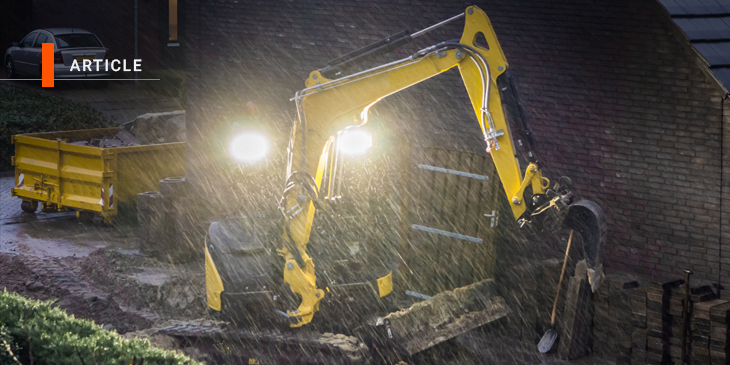Article by latest.insure
As the temperature dips, how prepared is your business for winter operations? We’ll outline the range of risks the colder weather brings and how to minimise them. It’s also timely to review your insurance cover.
Putting a damper on things
Your business may have workers in unheated environments or out in the field where they face extra dangers when working in the cold. Research shows exposure to colder temperatures lowers the immune system, which means workers have a higher risk of infections. Risks include hypothermia (an abnormally low body temperature that can be fatal) and slips, trips, or falls on wet or icy surfaces.
Reducing common risks
Safe working codes, such as from Safework Australia, list these factors you’ll need to consider to reduce risks to employees’ health and safety:
- Wind chill
- Air temperature
- Floor temperature
- Humidity (wetness)
- Clothing
- Amount of physical exertion
- Surrounding average temperature
- Sun penetration.
Your obligations relate to conditions that threaten health and safety rather than ensuring staff are always comfortable. As the temperature dips during the colder months, the risk rises of cold-associated diseases and injuries, including sprains and strains. Long-term effects include arthritis, rheumatism, breathing difficulties, and heart disease, according to SafeWork NSW.
Best practice centres on employers offering protection and training, including:
- From wind and rain, such as a vehicle cabin, hut, even plastic tarp or sheeting helps temporarily shield workers from drafts and cold winds
- Localised heating, for example, in a fork-lift truck when operated outdoors or in cold stores
- Waterproof thermal clothing and footwear
- Allowing staff job rotation and rest breaks to acclimatise if they’re not used to working in the cold
- Helping staff stay hydrated with warm fluids, including soup or hot chocolate (and access to toilets)
- Retrofitting insulation on the handles of metal tools, so outdoor staff don’t have to grasp cold handles
- Having non-slip outdoor walking areas or placing non-slip mats to guide foot traffic
- Ensuring work vehicles’ windscreen wiper fluid is topped up and fuel tanks are half full
- Training workers about the hazards of working in the elements to spot and deal with cold stress and hypothermia symptoms in themselves and others.
Your best protection is to eliminate exposure to the cold, check upcoming weather conditions, and, if possible, reschedule the work to a warmer part of the day (or week/month/season) to eliminate risks associated with working in the cold.
Preparing for the worst-case
While some parts of Australia face frosty and below-zero temperatures in winter, it’s rare to be snowed in. Be mindful, though, frostbite can happen in a few minutes in cold enough conditions with a high wind-chill factor. Some staff will have a higher frostbite risk if they have circulation problems, have had a recent injury or blood loss, have ingested alcohol, use nicotine or take beta-blocker medications.
Australia does have winter storms, floods, or other disasters that could interrupt power or gas supply to your business premises. Also, frozen pipes that burst may cause havoc. A backup plan for the worst-case scenario helps keep things humming. Consider having alternatives, for example, such as a portable generator you run outdoors for indoor heaters.
For those working outdoors, such as in remote areas, cold weather brings an increased risk of injuries, even deaths. Having a buddy system for workers and a winter emergency safety kit are sensible. It would include a battery-charged radio, water, snacks, a whistle to call for help, and torches. Include extra batteries because they’ll discharge more quickly in cold weather.
Cover to keep you warm
Where winter rain or ice creates treacherous conditions for staff, customers, or other visitors to your site, there’s a higher risk of injuries. Think slips, trips, and falls on wet or icy paths, stairs, or steps. You’ll have compulsory workers’ compensation insurance to cover your staff, but will need a public liability policy for others. It covers compensation and defence costs, potentially saving your businesses thousands of dollars should there be a claim.
McKenzie Ross Business Insurance Brokers can explain the differences between policies to ensure you’re covered for exactly what you need and want with a customised insurance package.


